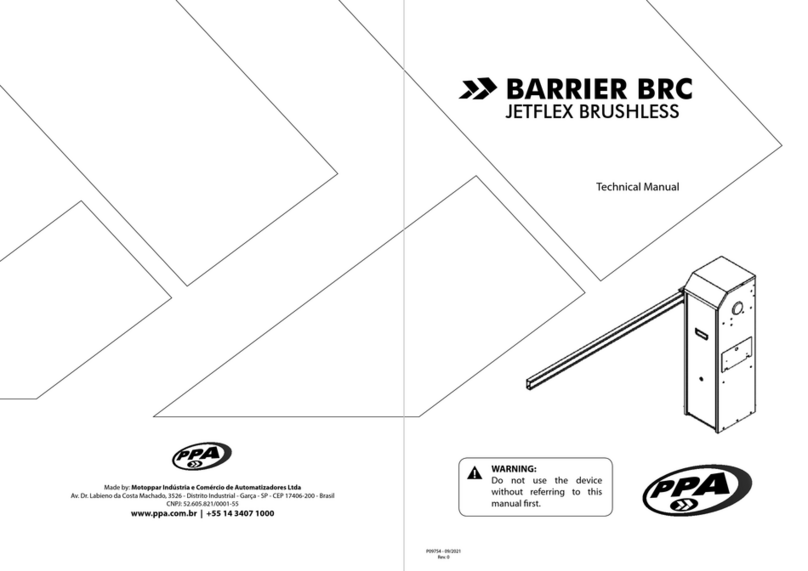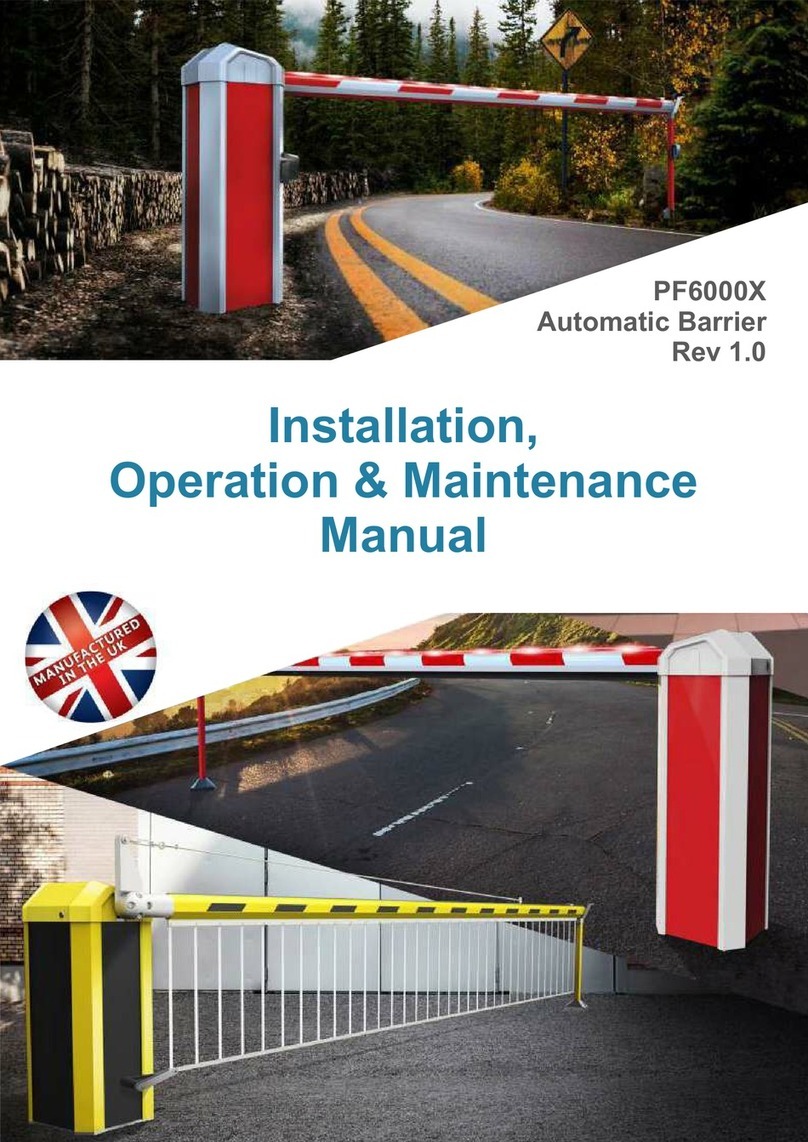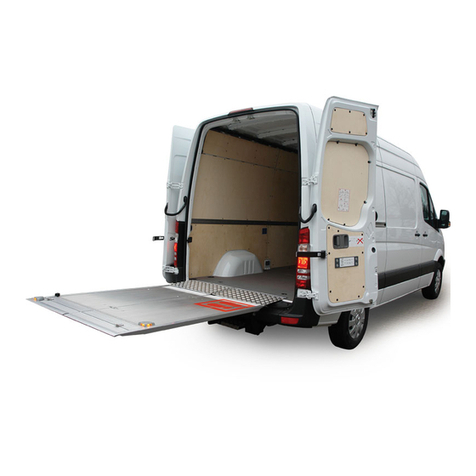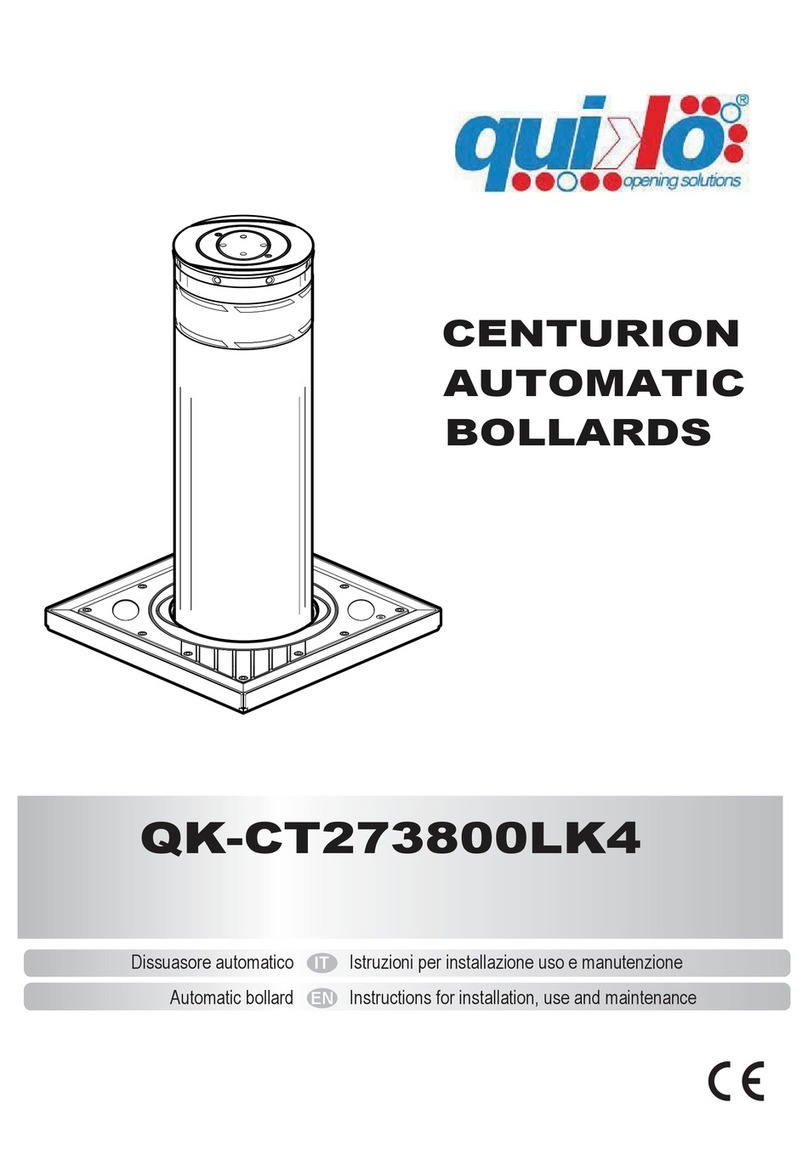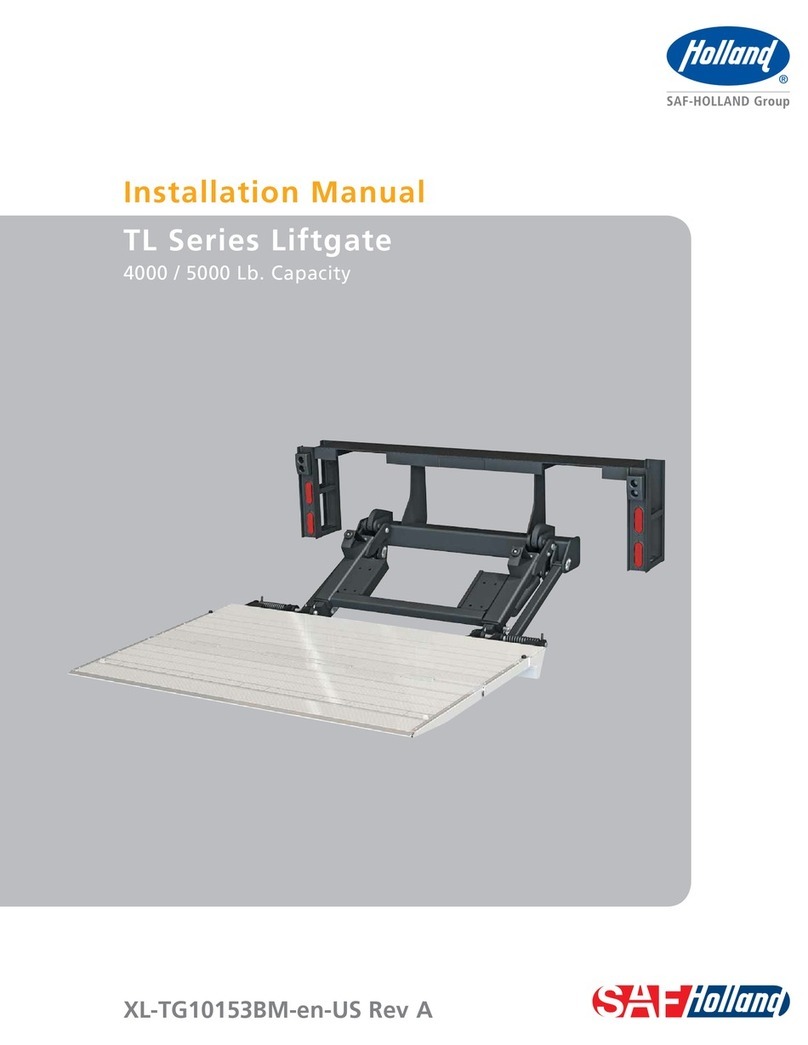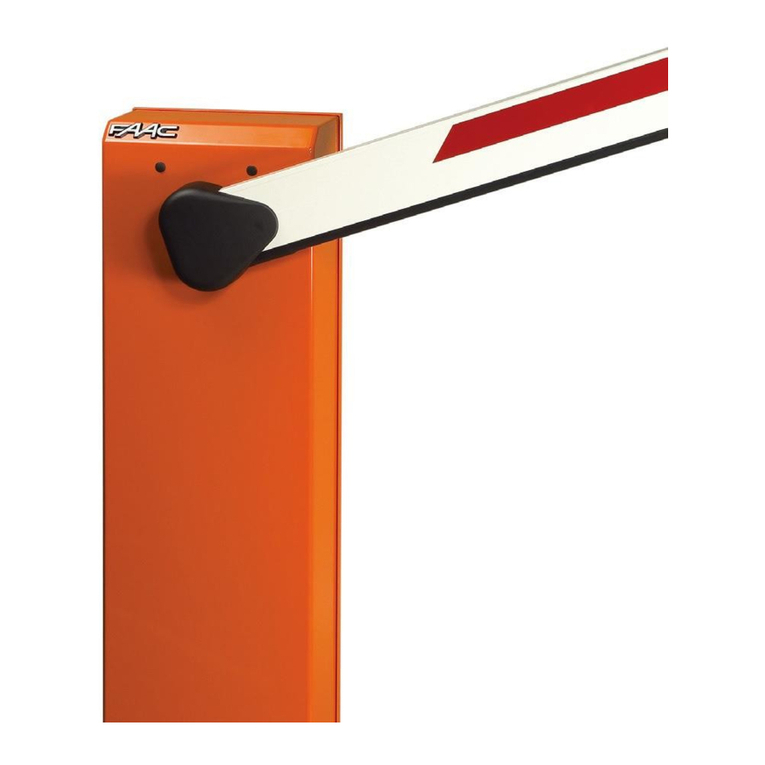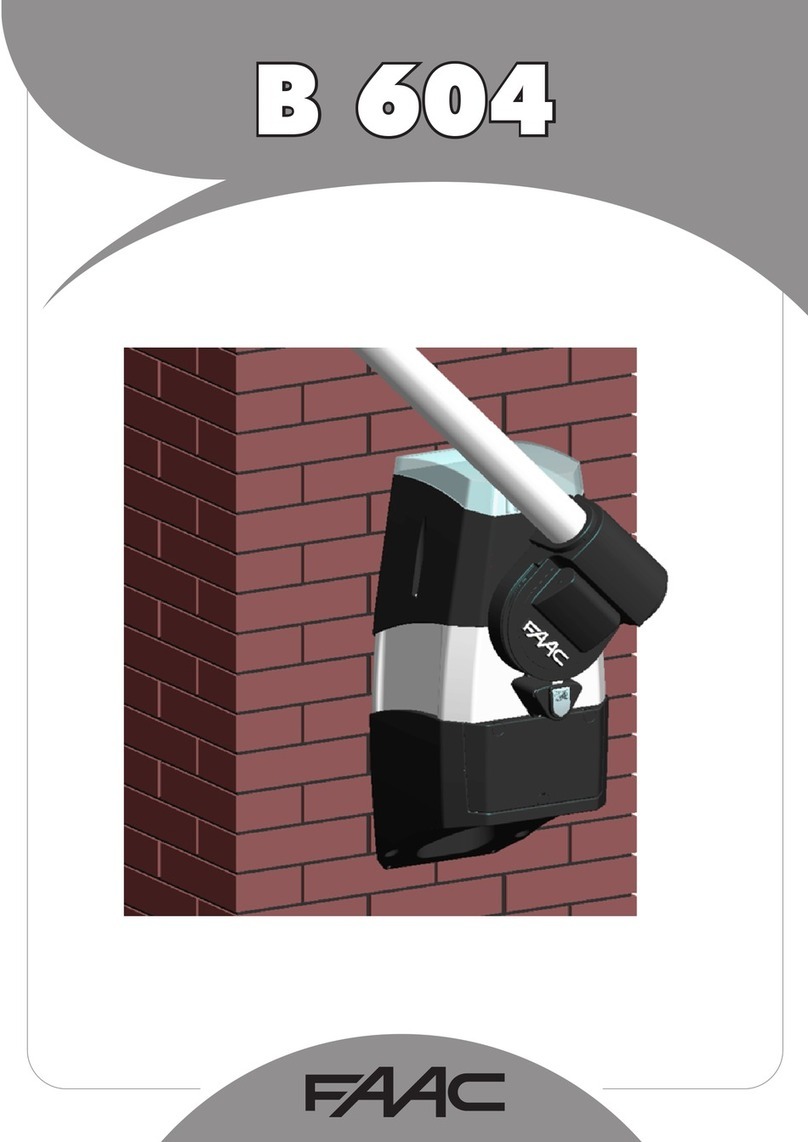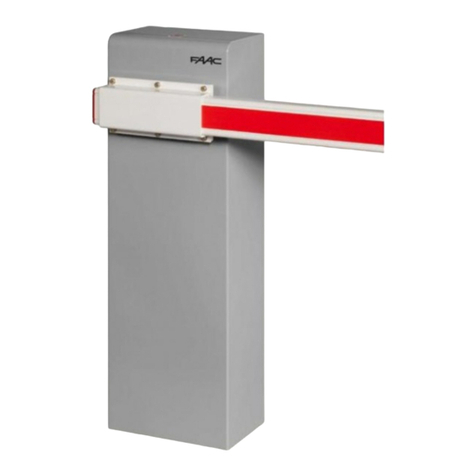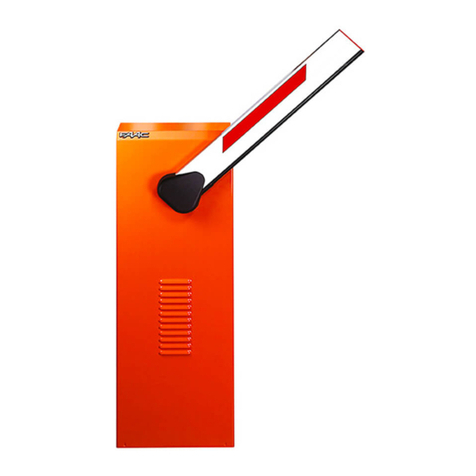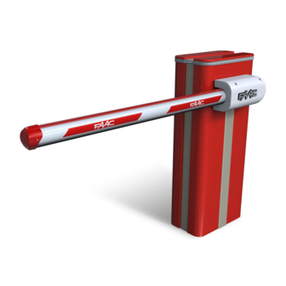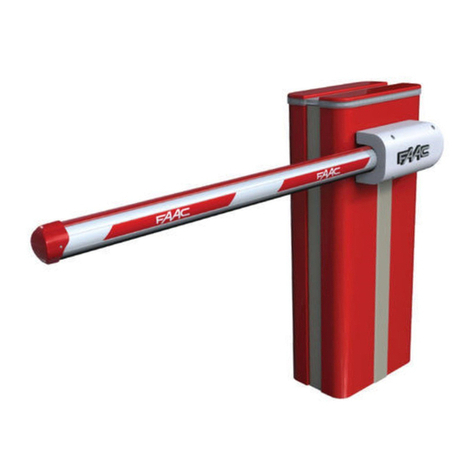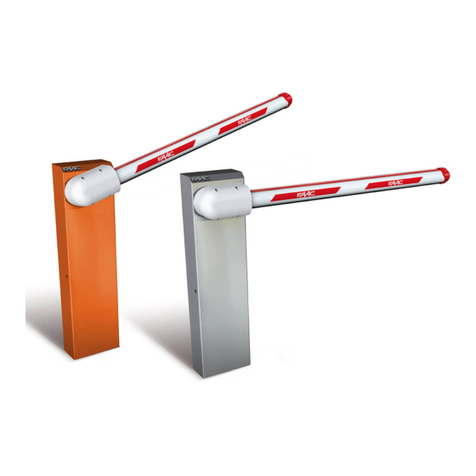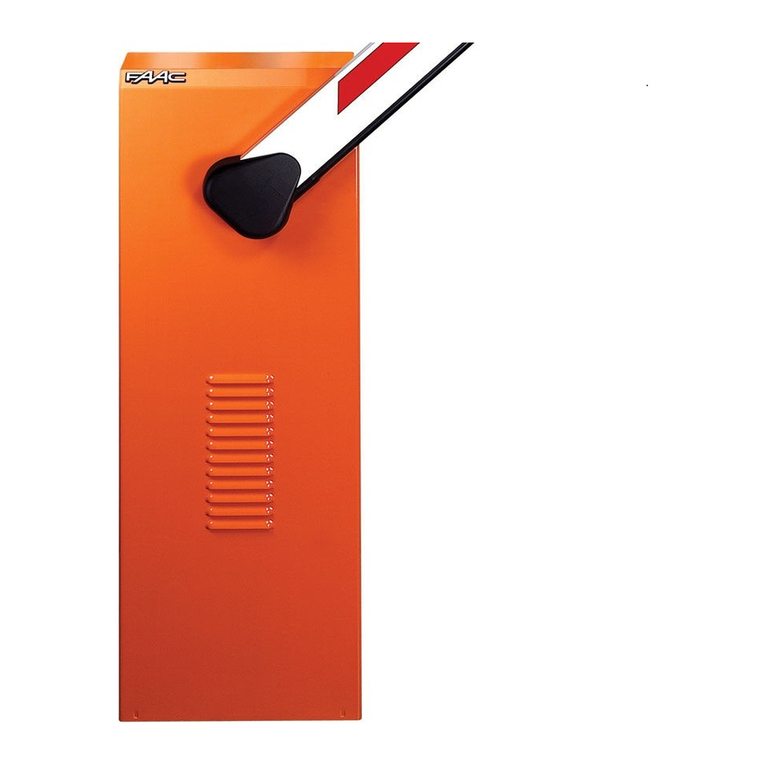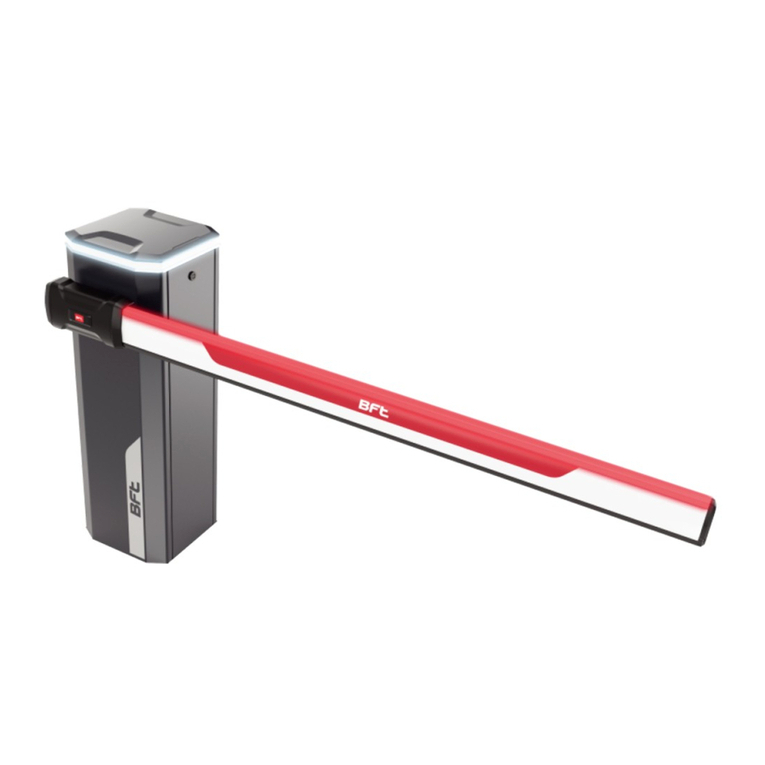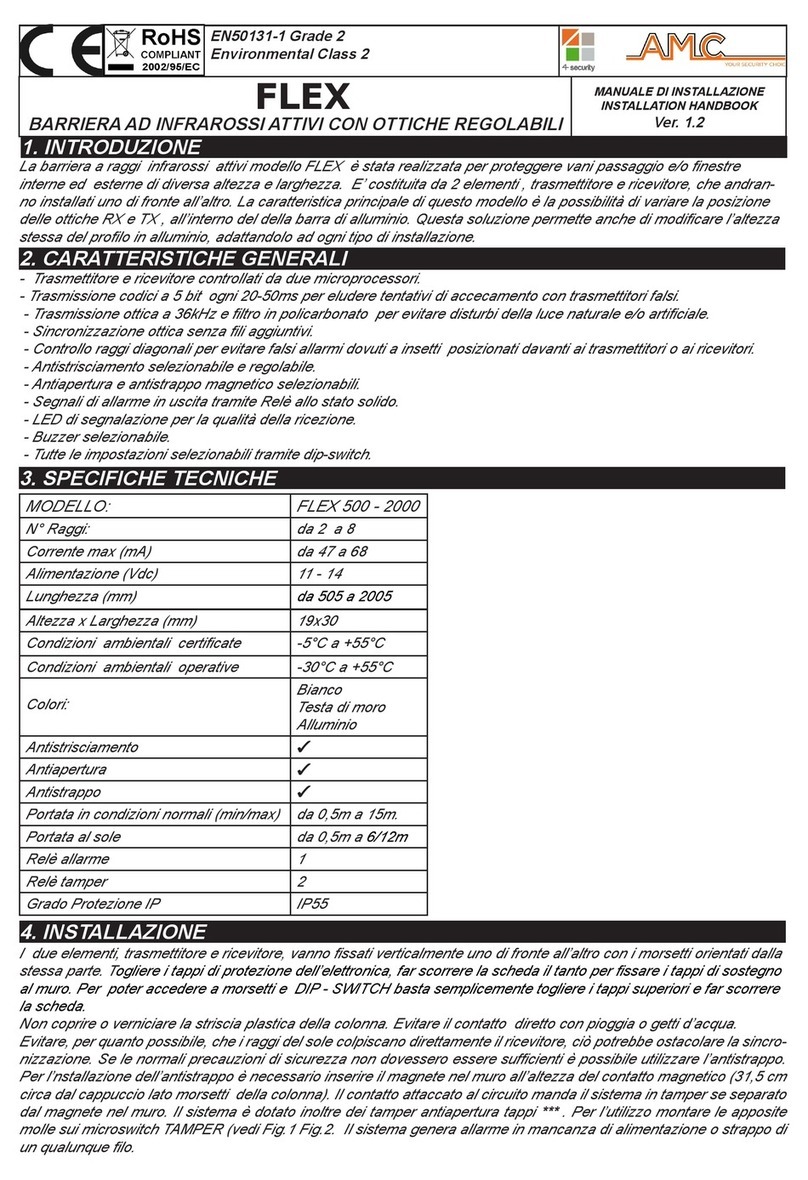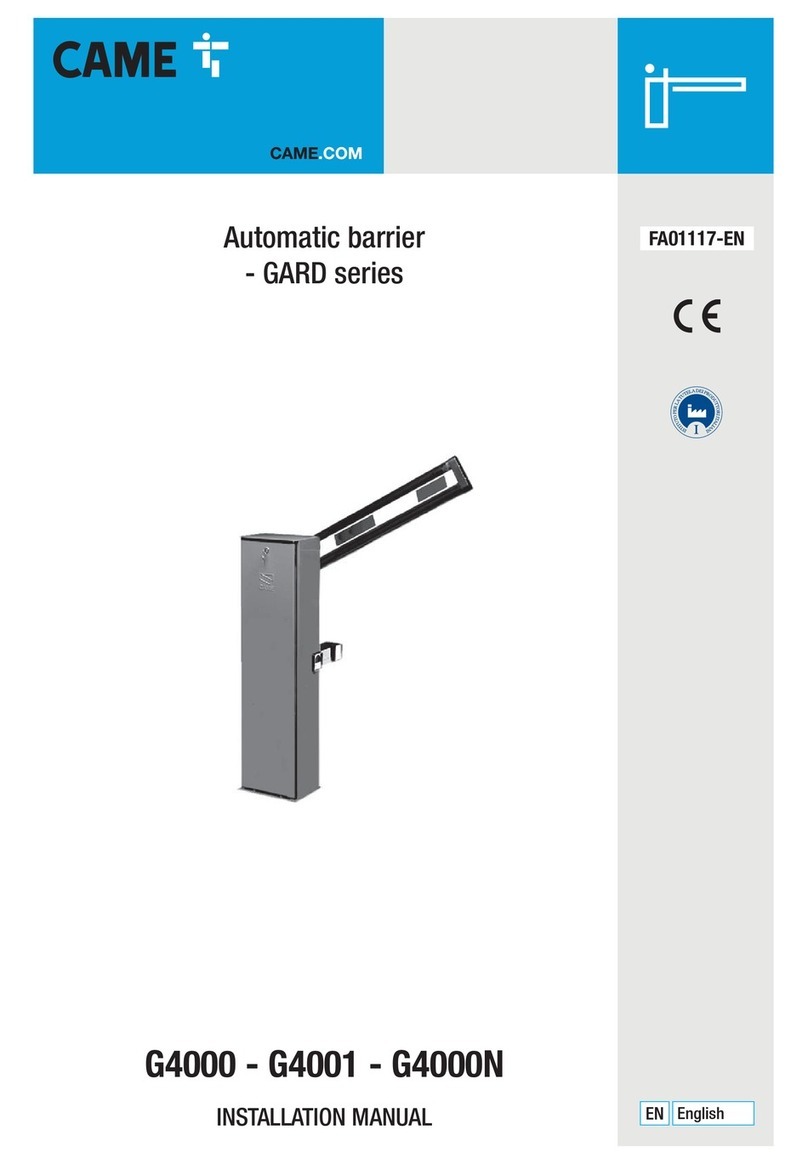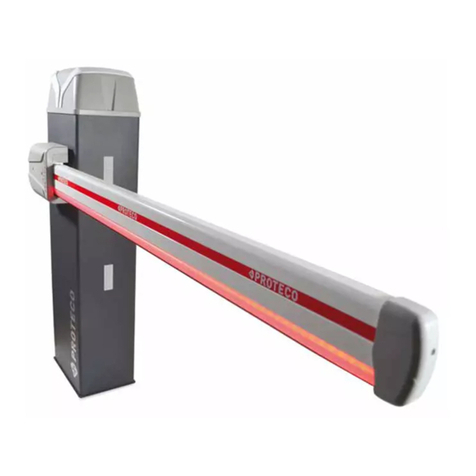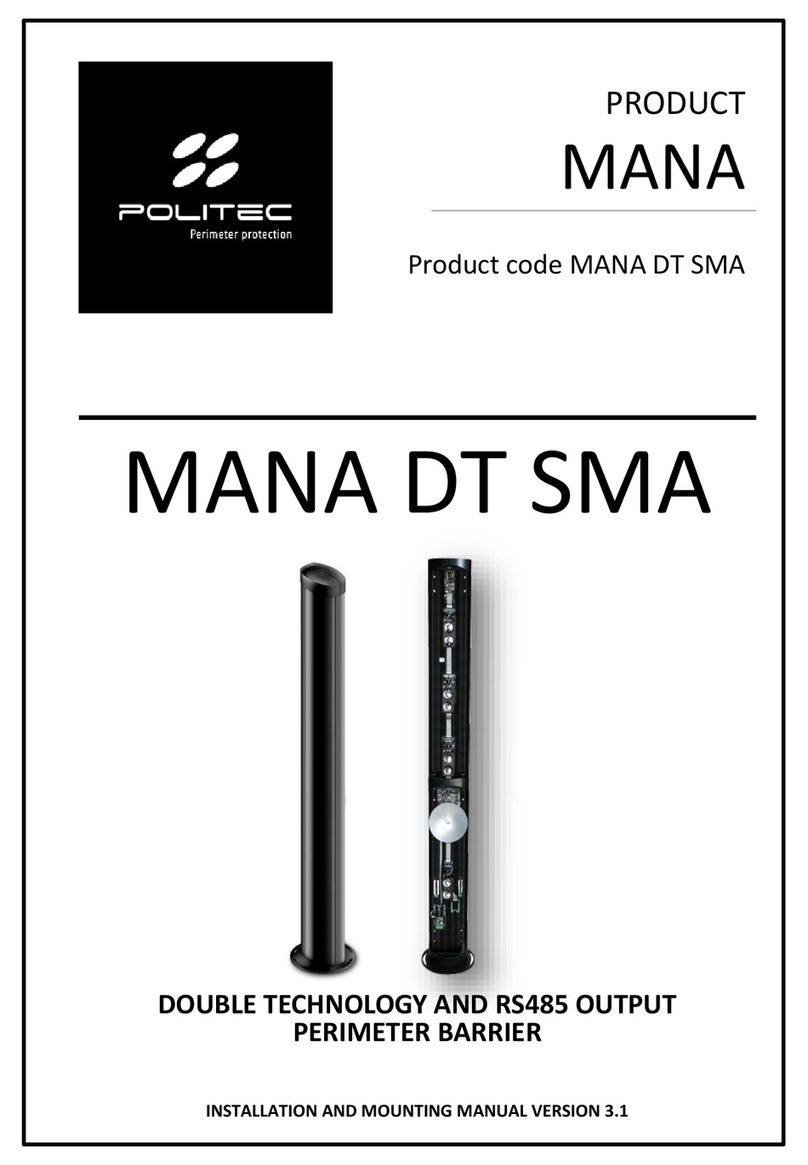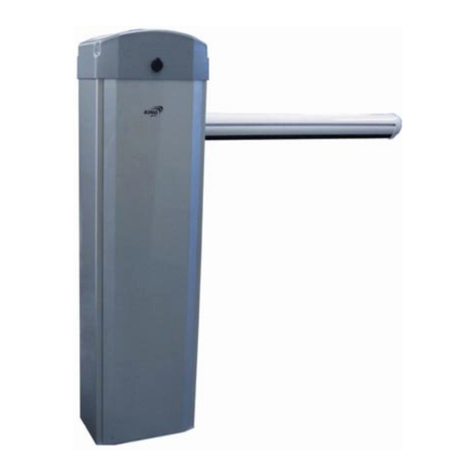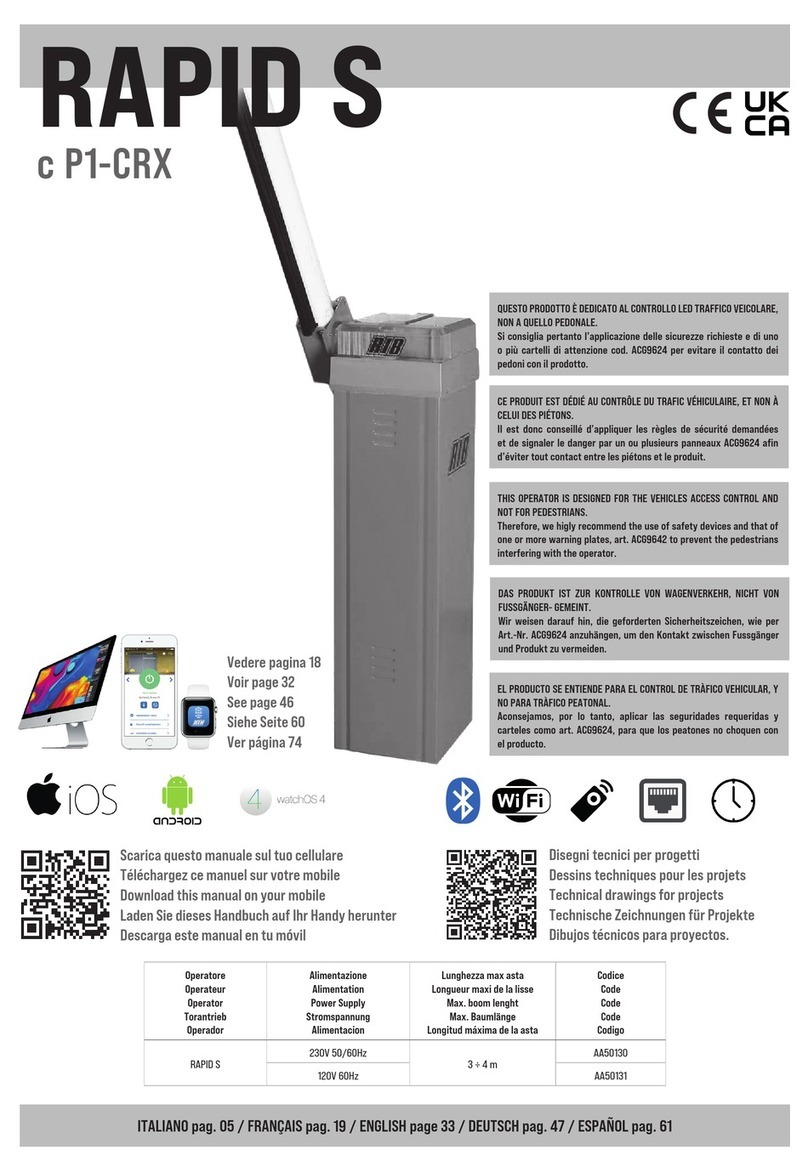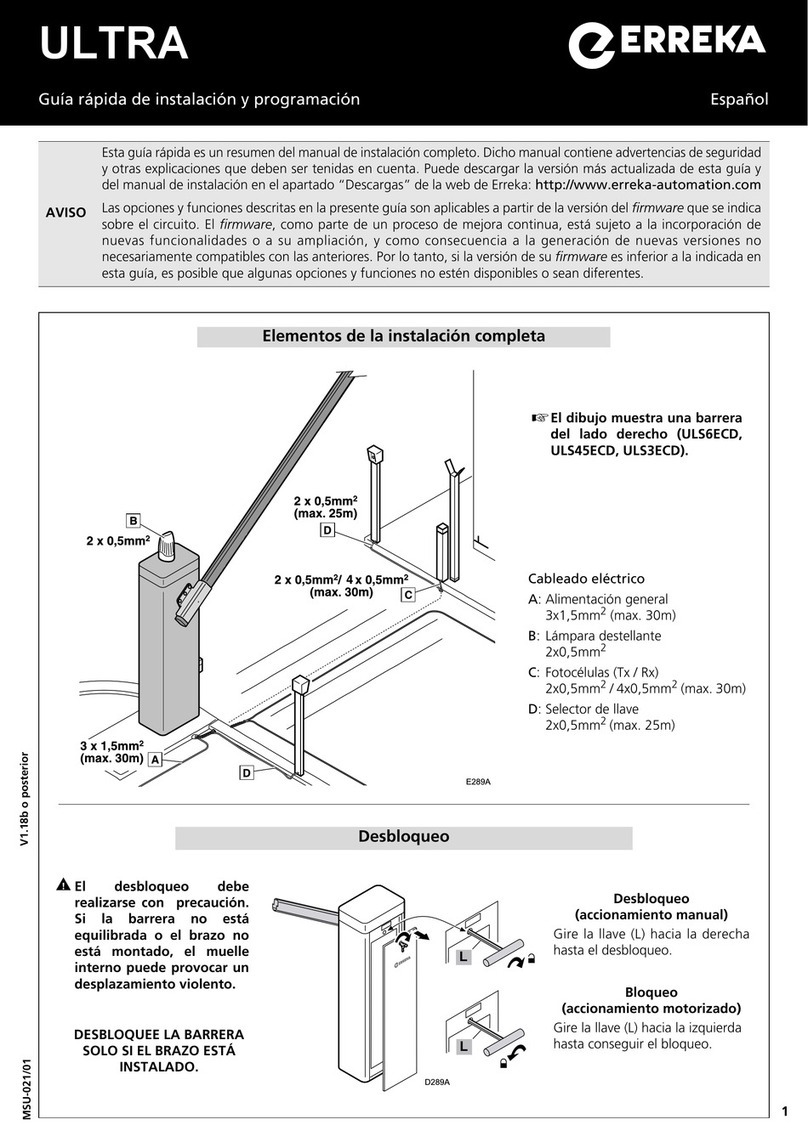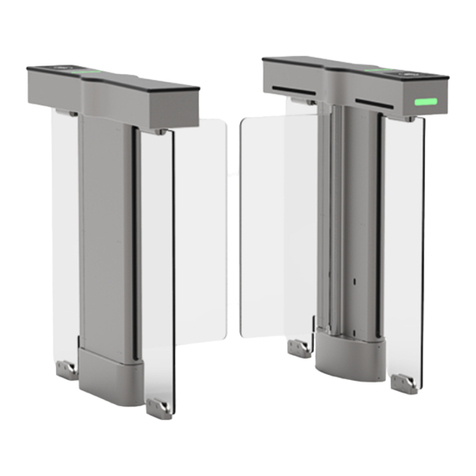
B680H 4 732719 - Rev.D
Translation of the original instructions ENGLISH
WARNINGS FOR THE INSTALLER
GENERAL SAFETY OBLIGATIONS
1) ATTENTION! To ensure the safety of people, it is important that you read
all the following instructions. Incorrect installation or incorrect use of the
product could cause serious harm to people.
2) Carefully read the instructions before beginning to install the product..
3) Do not leave packing materials (plastic, polystyrene, etc.) within reach of children
as such materials are potential sources of danger.
4) Store these instructions for future reference.
5) This product was designed and built strictly for the use indicated in this documen-
tation. Any other use, not expressly indicated here, could compromise the good
condition/operation of the product and/or be a source of danger.
6) FAAC declines all liability caused by improper use or use other than that for
which the automated system was intended.
7) Do not install the equipment in an explosive atmosphere: the presence of
inflammable gas or fumes is a serious danger to safety.
8) The mechanical parts must conform to the provisions of Standards EN 12604
and EN 12605. For non-EU countries, to obtain an adequate level of safety,
the Standards mentioned above must be observed, in addition to national legal
regulations..
9) FAAC is not responsible for failure to observe Good Technique in the construction
of the closing elements to be motorised, or for any deformation that may occur
during use.
10) The installation must conform to Standards EN 12453 and EN 12445. For non-
EU countries, to obtain an adequate level of safety, the Standards mentioned
above must be observed, in addition to national legal regulations..
11) Before attempting any work on the system, cut out electrical power.
12) The mains power supply of the automated system must be fitted with an all-pole
switch with contact opening distance of 3mm or greater. Use of a 6A thermal
breaker with all-pole circuit break is recommended.
13) Make sure that a differential switch with threshold of 0.03 A is fitted upstream
of the system.
14) Make sure that the earthing system is perfectly constructed, and connect metal
parts of the closing elements to it.
15) The automated system features a built-in anti-crushing safety device consisting
of a torque control. It is however necessary to check its tripping threshold, as
provided for in the Standards described in point 10.
16) The safety devices (EN 12978 standard) protect any danger areas against
mechanical movement Risks, such as crushing, dragging, and shearing.
17) For each system, we recommend using at least one signal light (e.g.: FAACLED
or integrated flashing traffic light) as well as a warning sign securely fixed to the
structure, together with the devices described in point “16”.
18) FAAC declines all liability as concerns safety and efficient operation of the
automated system, if system components not produced by FAAC are used.
19) For maintenance, strictly use original parts by FAAC.
20) Do not in any way modify the components of the automated system
21) The installer shall supply all information concerning manual operation of the
system in case of an emergency, and shall hand over to the User the leaflet
supplied with the product.
22) Do not allow children or adults to stay near the product while it is operating.
23) Keep radio controls or other pulse generators away from children, to prevent
the automated system from being activated involuntarily.
24) Transiting is permitted only when the automated system is stationary.
25) The User must not attempt any kind of repair or direct action whatever and
contact qualified personnel only.
26) Maintenance: check at least every 6 months the efficiency of the system,
particularly the efficiency of the safety devices (including, where foreseen, the
operator thrust force) and of the release devices.
27) Anything not expressly specified in these instructions is not permitted.
EU DECLARATION OF CONFORMITY
The Manufacturer
Company name: FAAC S.p.A. Soc. Unipersonale
Address: Via Calari, 10 - 40069 Zola Predosa BOLOGNA - ITALY
hereby declares under its own exclusive liability that the following product:
Description: Barrier
Model: B680H
complies with the following applicable EU legislations:
2014/30/EU
2011/65/EU
Furthermore, the following harmonised standards have been applied:
EN 61000-6-2:2005
EN 61000-6-3:2007 + A1:2011
Bologna, Italy, 01-04-2020 CEO
A. Marcellan
DECLARATION OF INCORPORATION FOR PARTLY
COMPLETED MACHINERY
(2006/42/EC ANNEX II P.1, B)
Manufacturerand person authorised to preparetherelevant technical documentation
Company name: FAAC S.p.A. Soc. Unipersonale
Address: Via Calari, 10 - 40069 Zola Predosa BOLOGNA - ITALY
hereby declares that for the partly completed machinery:
Description: Barrier
Model: B680H
The essential requirements of the Machinery Directive 2006/42/EC (including
all applicable amendments) that have been applied and fulfilled are as follows:
1.1.2; 1.1.3; 1.1.5; 1.1.6; 1.2.1; 1.2.3;1.2.5; 1.2.6; 1.3.1; 1.3.2; 1.3.4; 1.3.6; 1.3.7;
1.3.8.1; 1.3.9; 1.4.1; 1.4.2.1; 1.5.1; 1.5.2; 1.5.3; 1.5.5; 1.5.6; 1.5.7; 1.5.8; 1.5.10;
1.5.11; 1.5.13; 1.6.1; 1.6.4; 1.7.3; 1.7.4.1; 1.7.4.2; 1.7.4.3
and that the relevant technical documentation has been compiled in compliance
with part B of Annex VII.
Furthermore, the following harmonised standards have been applied:
EN60335-2-103-2015
EN12100:2010
EN13849-1:2015 CAT 2 PL“c”
EN13849-2:2012
Andalso undertakesto transmit,in responsetoareasonedrequestby the nationalau-
thorities, relevant information on the partly completed machinery by mail or e-mail.
Finally, the manufacturer declares that the above-mentioned partly completed
machinery must not be put into service until the final machine in which it is to be
incorporated has been declared compliant with the requirements of the above-
mentioned Machinery Directive 2006/42/EC.
Bologna, Italy, 01-04-2020 CEO
A. Marcellan
